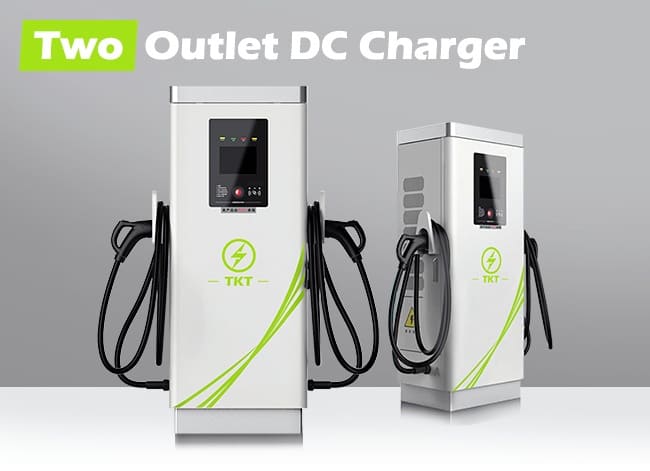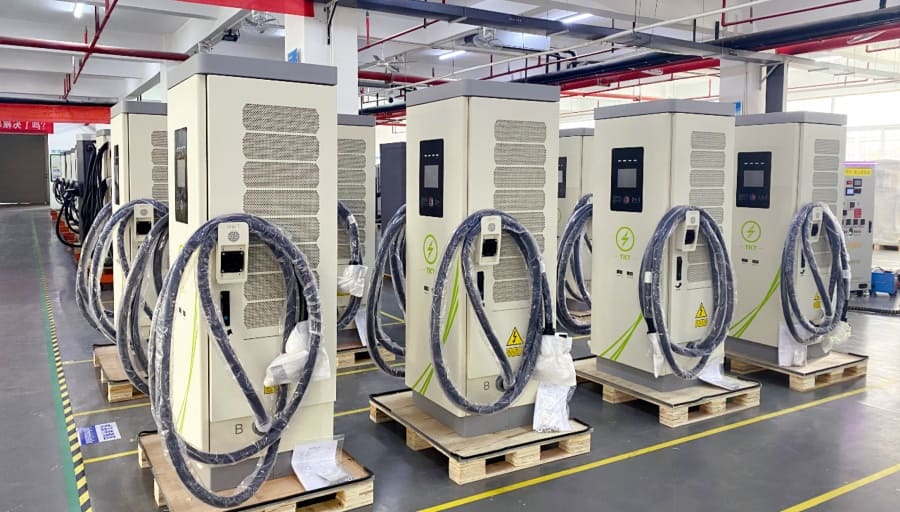What is a dc fast charging station?
DC Fast Charging Station, is a fixed installation, connected to the AC power grid power supply device. The DC fast charging stations adopts three-phase power supply, its input voltage is AC380V±15%, frequency is 45-65Hz, and its output is direct current, which can directly charge the power battery of electric vehicles. DC fast charging stations output voltage and current adjustment range is large, can provide ultra-high power, so it can meet the needs of rapid charging.
In practical application, DC fast charging stations have become one of the important facilities for electric vehicle charging. They not only have the advantages of fast charging and high efficiency, but also can realize remote monitoring and control through intelligent features to facilitate the charging process of electric vehicles.
How do DC fast charging stations work?
DC fast charging stations work by converting alternating current (AC) to direct current (DC) and providing fast charging for electric vehicles through high-powered charging equipment.
The DC fast charging station converts incoming AC power to DC power through its internal rectifier and inverter, and adjusts the voltage and current levels according to the needs of the electric vehicle. It delivers the DC power directly to the power battery of the electric vehicle, thus realizing fast charging of the battery.
Since the DC fast charging station outputs a wide range of current and voltage, it can fully charge an electric vehicle in a shorter period of time. Generally speaking, charging with a DC fast charging station can fully charge an electric vehicle between 20 minutes and 2 hours, depending on the battery capacity of the electric vehicle and the power level of the charging station.
What is the difference between a DC fast charging stations and an AC fast charging stations?
The main difference between DC fast charging station and AC fast charging station is reflected in charging speed, equipment cost and usage scenarios.
A. Charging speed: DC fast charging station uses DC power supply to charge electric vehicles, due to the characteristics of DC power, it can provide a large amount of electricity for electric vehicles in a short time, so the charging speed is faster. On the other hand, the AC fast charging station uses AC power source, which needs to be converted into DC power for charging by the vehicle charger, so the charging speed is relatively slow.
B. Equipment cost: DC fast charging station needs to have higher voltage and current output capacity, so it needs to use more complex circuit and equipment, the cost is relatively high. On the other hand, AC fast charging stations are relatively simple and low cost.
C. Scenarios: DC fast charging stations are usually applied to large charging stations, highway service areas and other places that need to provide fast charging services for electric vehicles. On the other hand, AC fast charging stations are more suitable for small charging scenarios, such as homes and offices, to provide slow charging services for electric vehicles.
There are more DC fast charger solutions and basics within the site. Welcome to click to learn more: https://www.busthermo.com/product/dc-fast-charging-stations/


评论
发表评论